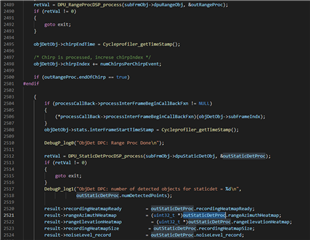Hello,
I am using an IWR6843AOPEVM with SDK3.5 and I want to implement an application to measure garbage in a cube, similar to IWR6843: Locate static objects, IWR6843ISK-ODS: Locate static objects and IWR6843: Measurement of static objects.
My cube has dimensions of 1m x 1.5m x 1.5m (WxHxD) and for now I am working with OOB and my own parser script and configuration. My results are not as good as I want to and in the threads I linked before you talked about a lab for static detections.
In this thread (https://e2e.ti.com/support/sensors-group/sensors/f/sensors-forum/857199/iwr6843-measurement-of-static-objects) you linked to two new labs, but I am not able to reach them. Could you please refer to them again?
Best regards.




